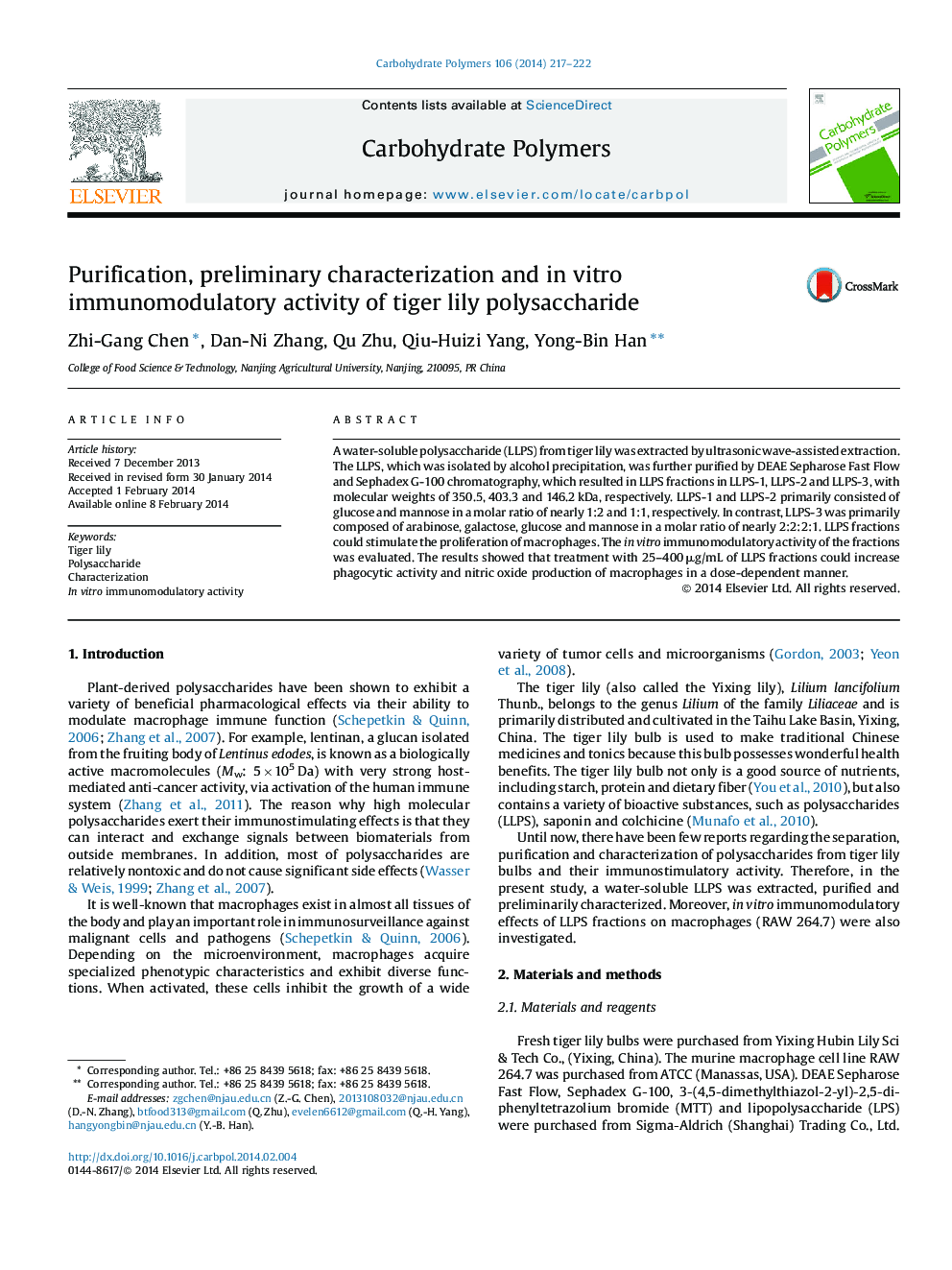| Article ID | Journal | Published Year | Pages | File Type |
|---|---|---|---|---|
| 1384064 | Carbohydrate Polymers | 2014 | 6 Pages |
•DEAE-Sepharose and Sephadex G-100 columns were used for fractionation of LLPS.•Three fractions (LLPS-1, LLPS-2 and LLPS-3) were acquired.•LLPS-1 and LLPS-2 primarily consisted of glucose and mannose.•LLPS-3 was primarily composed of arabinose, galactose, glucose and mannose.•Three fractions exhibited high invitro immunomodulatory activity.
A water-soluble polysaccharide (LLPS) from tiger lily was extracted by ultrasonic wave-assisted extraction. The LLPS, which was isolated by alcohol precipitation, was further purified by DEAE Sepharose Fast Flow and Sephadex G-100 chromatography, which resulted in LLPS fractions in LLPS-1, LLPS-2 and LLPS-3, with molecular weights of 350.5, 403.3 and 146.2 kDa, respectively. LLPS-1 and LLPS-2 primarily consisted of glucose and mannose in a molar ratio of nearly 1:2 and 1:1, respectively. In contrast, LLPS-3 was primarily composed of arabinose, galactose, glucose and mannose in a molar ratio of nearly 2:2:2:1. LLPS fractions could stimulate the proliferation of macrophages. The in vitro immunomodulatory activity of the fractions was evaluated. The results showed that treatment with 25–400 μg/mL of LLPS fractions could increase phagocytic activity and nitric oxide production of macrophages in a dose-dependent manner.
